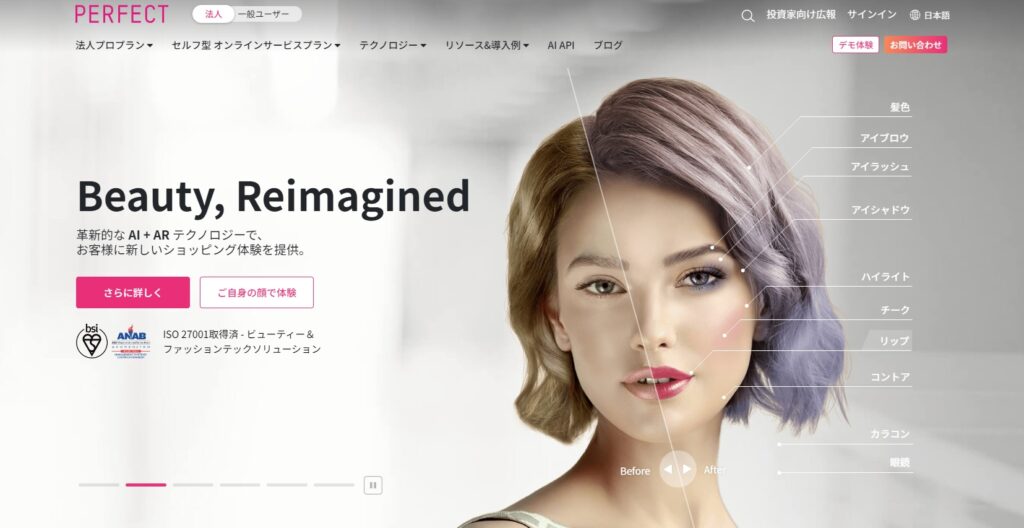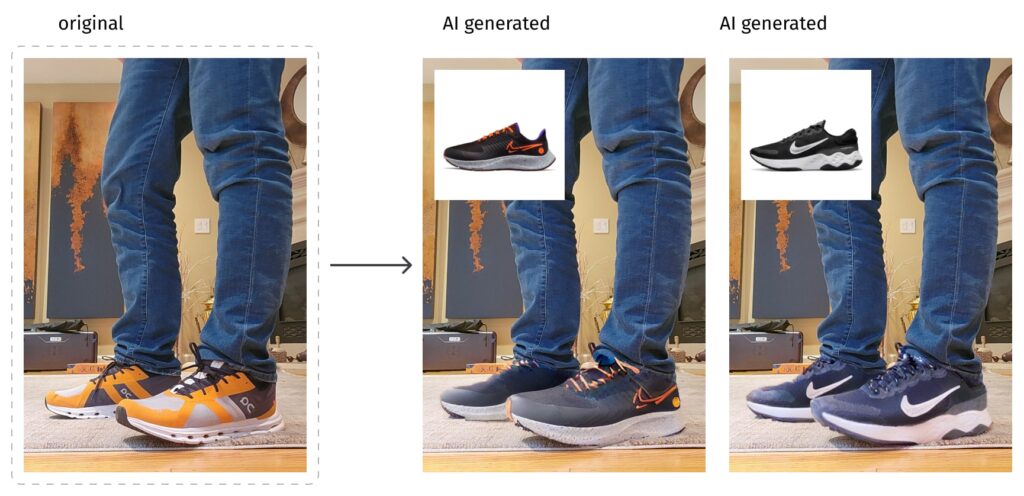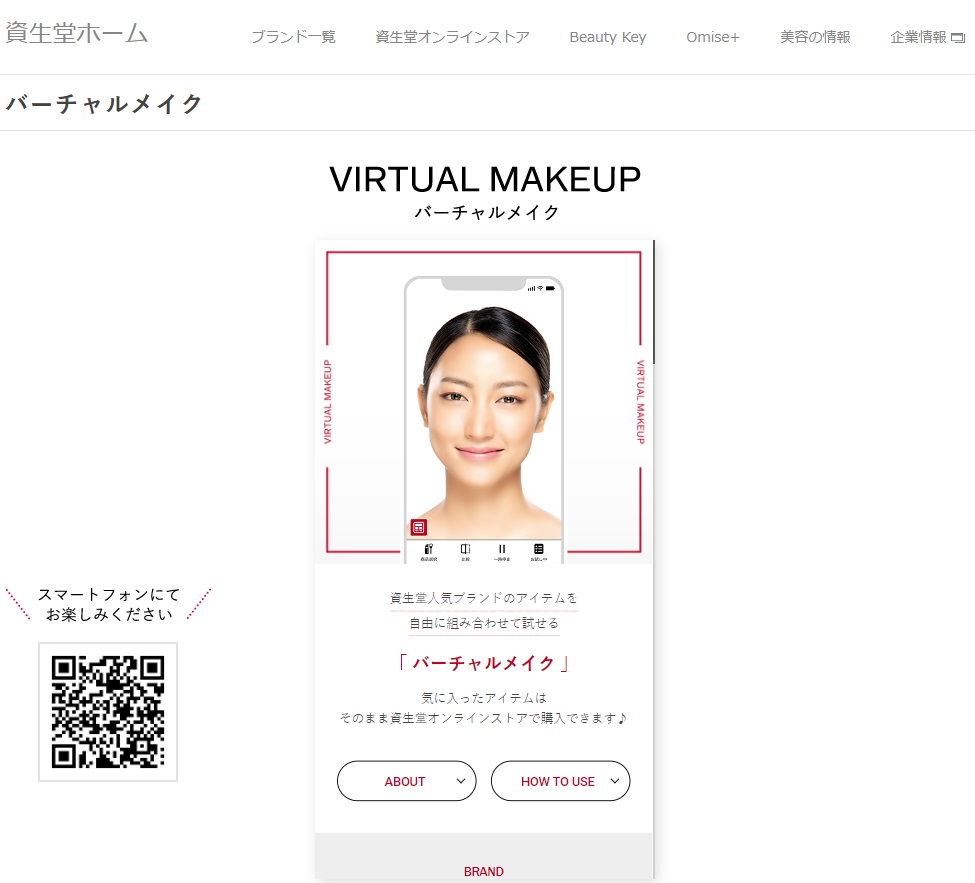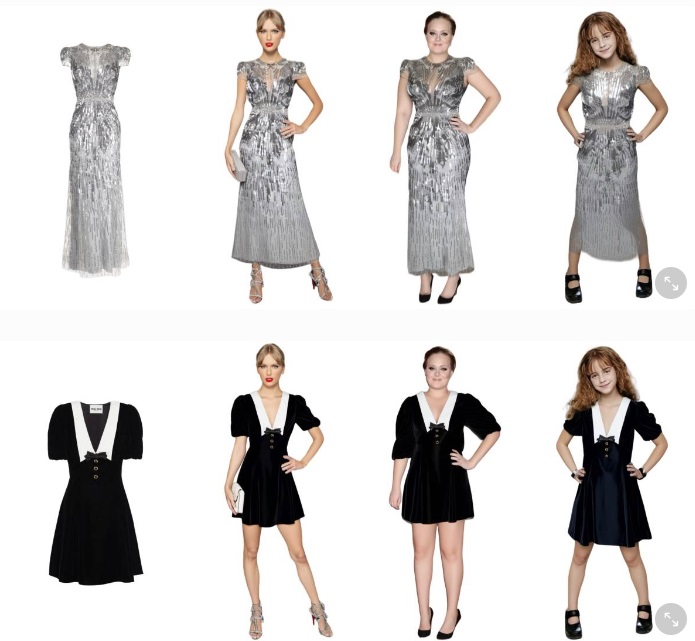The Future of Shopping Experiences Shaped by AR and AI: The Business Impact of Virtual Try-On Technologies
With the rise of online shopping, Virtual Try-On (VTO) technology is emerging as a powerful growth driver, particularly in the fashion and beauty industries. By allowing consumers to try products online from the comfort of their homes, VTO not only eliminates hesitation before purchase but also helps reduce return rates. This article explores the latest technological trends in VTO and its growth trajectory in the Asian market.
Personalization through the Integration of AR and AI

Source: https://www.perfectcorp.com/ja/business
Virtual Try-On technology combines augmented reality (AR) and artificial intelligence (AI) to deliver unprecedentedly realistic experiences. AR overlays clothing or cosmetics on the consumer’s face or body, while AI learns their preferences, body type, and facial features to generate personalized product recommendations.
For example, Japan-based Perfect Corp. offers a virtual makeup function that allows users to try multiple blush shades simultaneously. This innovation has revolutionized the beauty industry by enabling consumers to confirm colors and textures in real time from home, significantly enhancing purchasing satisfaction. Moreover, by learning individual skin tones and facial shapes, AI can recommend the most suitable makeup styles tailored to each consumer’s needs.
The application of AR and AI extends beyond fashion and beauty into furniture and interior design. Consumers can now use AR to virtually place furniture in their living spaces, checking appearance and scale before purchase. As these technologies continue to advance, broader adoption across multiple industries is expected.
The Evolution of Try-On Services with Generative AI

Source: https://www.griddynamics.com/blog/virtual-try-on-strategies-genai
Generative AI is the next major innovation in VTO. By uploading their photos, consumers can generate highly realistic composite images of themselves wearing or using actual products, creating a more natural try-on experience.
On e-commerce platforms, this technology has proven to significantly boost conversion rates. By offering a more accurate assessment of product fit, return rates have dropped considerably. U.S.-based tech companies such as Fit and Auglio are at the forefront of this field, leveraging 3D body scanning and facial recognition to deliver optimally fitted try-on experiences. Consumers can now enjoy store-like interactions both online and offline, all from their own homes, dramatically enhancing convenience.
Immersive Shopping through Virtual Reality (VR)
Virtual reality (VR) is pushing VTO innovation further. Platforms such as VRChat allow users to create avatars and try on clothes or accessories in virtual environments. VR replicates the immersive shopping experiences of physical stores within a digital space, enabling consumers to evaluate products more realistically.
Interactive VR environments also make it easier for shoppers to explore items suited to diverse body types and styles. The future focus will be on how brands harness VR to strengthen consumer relationships and increase engagement.
The Role of Occlusion Technology and Multi-Tone AR
Occlusion technology is critical in making virtual try-on experiences more lifelike. By capturing movements of the face or hands via camera, this technology enables products to interact in real time, creating the sensation of physically touching or using them.
Meanwhile, multi-tone AR capabilities now allow consumers to instantly try products with multiple colors or textures applied at once. In fashion, for instance, shoppers can experiment with different shades and materials instantly, greatly expanding their online shopping options. This not only improves convenience for consumers but also serves as a powerful tool for businesses to stimulate purchase intent.
Rapid Expansion in the Asian Market
Virtual Try-On (VTO) technology is spreading quickly across Asia, with each country and region developing its own unique approach. The acceleration is driven by rising digital literacy among consumers and the rapid growth of e-commerce, creating favorable conditions for widespread adoption.

Source: https://www.shiseido.co.jp/sw/simulation/index_pc.html
Japan
In Japan, VTO technology is particularly prominent in the beauty sector. Major companies such as Shiseido and Perfect Corp. have embraced these tools, enabling consumers to try products effortlessly from home. AR-powered virtual makeup services are gaining traction, further fueling demand for online shopping. With the steady growth of Japan’s e-commerce market, VTO is expected to continue evolving and expanding its role.
South Korea
In South Korea, the popularity of K-pop and influencer-driven marketing strategies has helped accelerate VTO adoption. Beauty brands are leveraging AR platforms that allow consumers to virtually try their products, making digital engagement an integral part of customer experience. As a result, VTO services are now spreading across the entire beauty industry in the country.

Source: https://today.line.me/tw/v2/article/vXojRr8
China
China has seen particularly active adoption of VTO, led by major platforms such as Alibaba and JD.com, both of which are rolling out advanced AR features. Younger generations, already accustomed to digital-first shopping, are driving rapid uptake of these services. Virtual try-on is now playing a key role in shaping the country’s e-commerce landscape, with usage expected to continue expanding in the years ahead.
ASEAN Countries
Across ASEAN, VTO technology is also gaining ground. In Singapore, fashion brands are adopting AR solutions to provide consumers with more realistic try-on experiences. In Thailand and Indonesia, startups are pushing forward innovation in this field, accelerating market adoption. As online shopping continues to grow in the region, VTO is becoming a key driver of e-commerce development.
Business Impact and Future Outlook
VTO technology not only transforms the consumer shopping journey but also delivers significant advantages for businesses. Among the most notable benefits are reduced return rates, higher customer satisfaction, and stronger omnichannel strategies that integrate online and offline shopping experiences.
With the continued advancement of AI, greater personalization is on the horizon. Generative AI and VR technologies are expected to make try-on experiences even more realistic and immersive. For companies, adopting these innovations early will be essential to creating new value for consumers and gaining a competitive edge.
Summary
VTO technology is more than just a convenient tool—it is reshaping the very nature of commerce. Businesses benefit directly from reduced return rates and improved customer satisfaction, while also opening new opportunities to strengthen omnichannel strategies. By incorporating generative AI and VR, companies can provide more personalized services and enhance competitiveness. For many, adopting VTO today may prove to be a decisive factor in shaping tomorrow’s success.
Feel free to contact us
At MAY Planning, we provide strategic advice on the introduction of VTO technologies and the optimization of shopping experiences through AI and AR. We also support clients in developing marketing strategies that harness generative AI and VR, reducing return rates, and enhancing customer engagement through advanced data analytics.
Source:
1)「バーチャルお試しテック再燃、商品提案やスタイリングも」, 日本経済新聞, https://www.nikkei.com/article/DGXZQOUC11BPZ0R10C24A9000000/
2)「パーフェクト株式会社、バーチャルメイクでトレンドの立体感を出すチークを再現!」, PR TIMES, https://prtimes.jp/main/html/rd/p/000000158.000066482.html
3)「CVRアップ効果も!生成AIとVR/ARによるバーチャル試着がECのパーソナライズな購買を実現する」, EC-ORANGE, https://ec-orange.jp/ec-media/?p=30268
4)井幡 貴司「「バーチャルトライオン」はオンライン試着を実現するAR機能」, ebisumart MEDIA, https://ebisumart.com/blog/virtual-tryon/
5)Sergey Parakhin「Digital dressing rooms: How generative AI is redefining virtual try-ons」, Grid Dynamics, https://www.griddynamics.com/blog/virtual-try-on-strategies-genai
6)「Virtual Try-On Technology Solutions: Transforming the eCommerce Landscape.」, Webelight Solutions, https://www.webelight.com/blog/virtual-try-on-technology-solutions-transforming-the-e-commerce-landscape
7)「GVR Report cover Virtual Try-on Market Size, Share & Trends Analysis Report By Technology (AR, VR, AI & ML), By Application (Apparel & Clothing, Wristwatch & Jewelry), By Device, By Region, And Segment Forecasts, 2024 – 2030」, Grand View Research, https://www.grandviewresearch.com/industry-analysis/virtual-try-on-market-report


